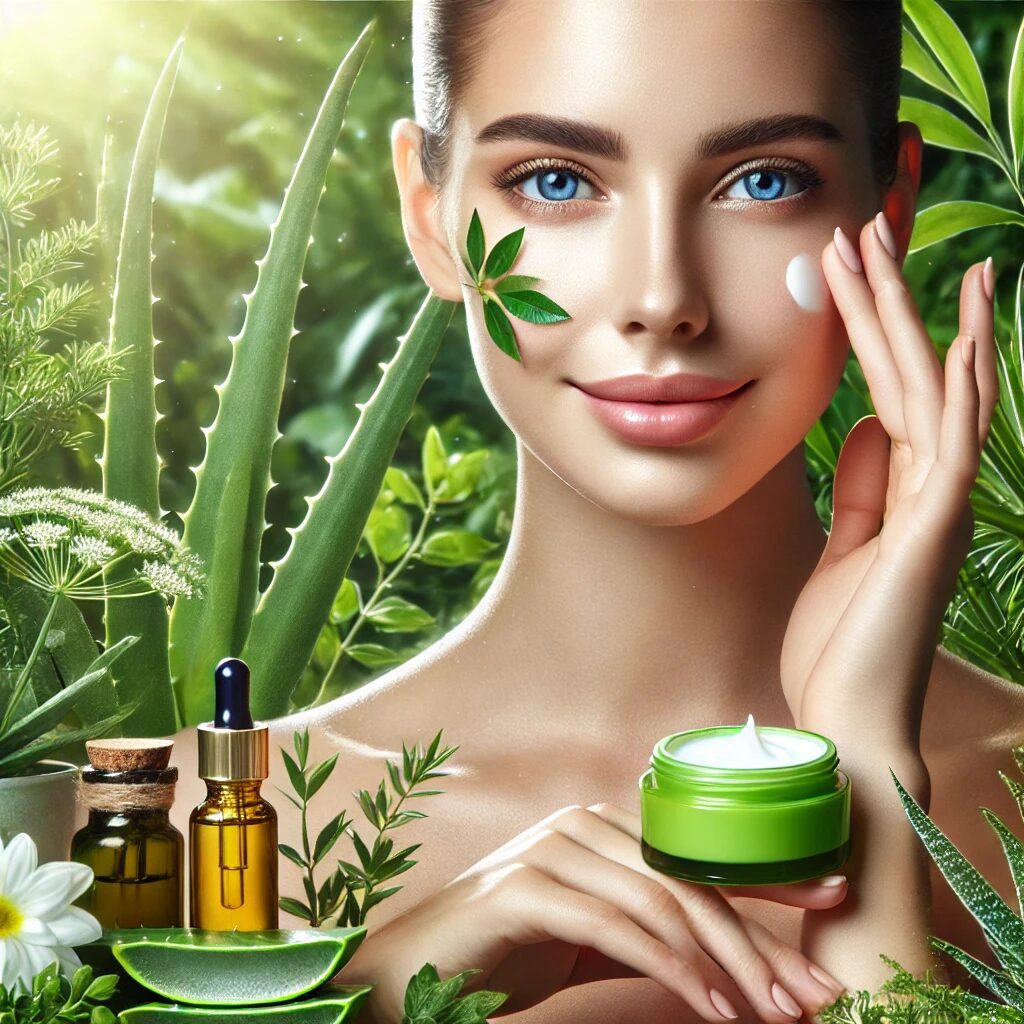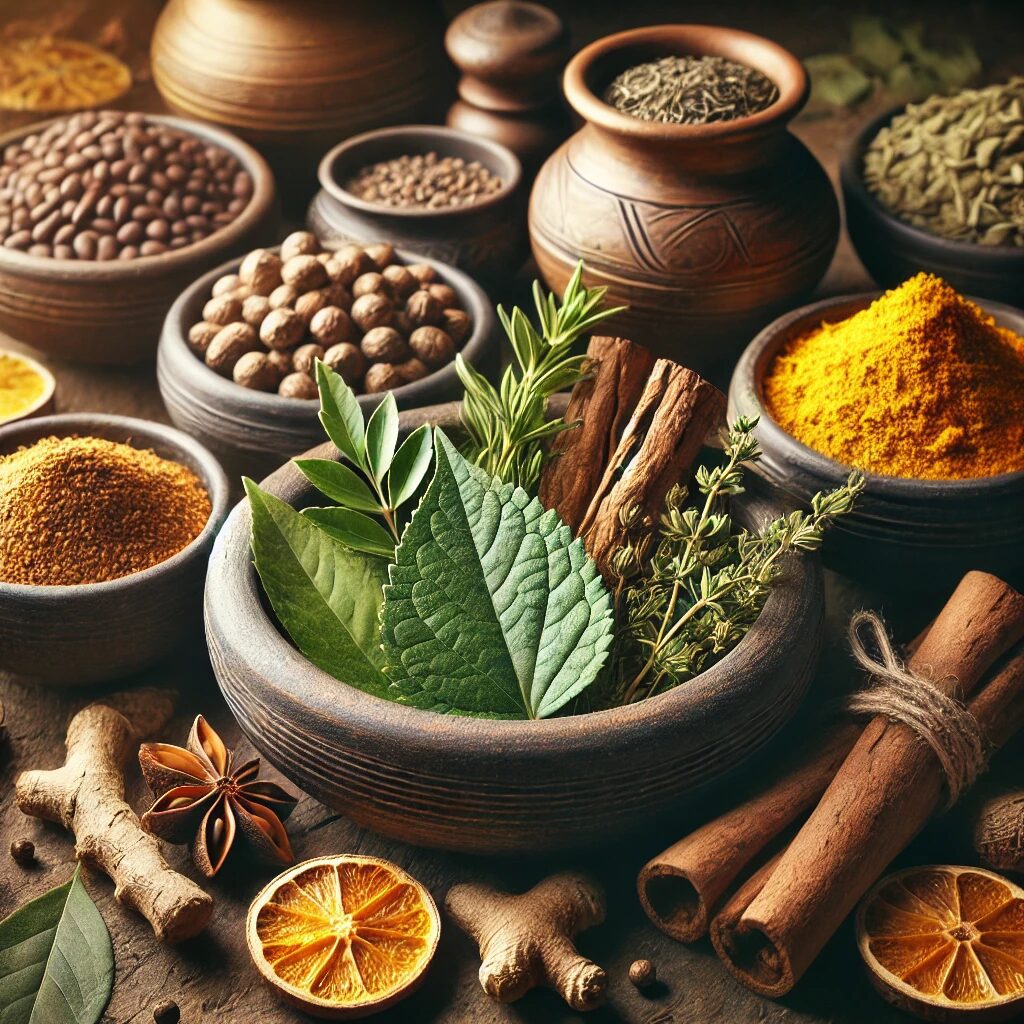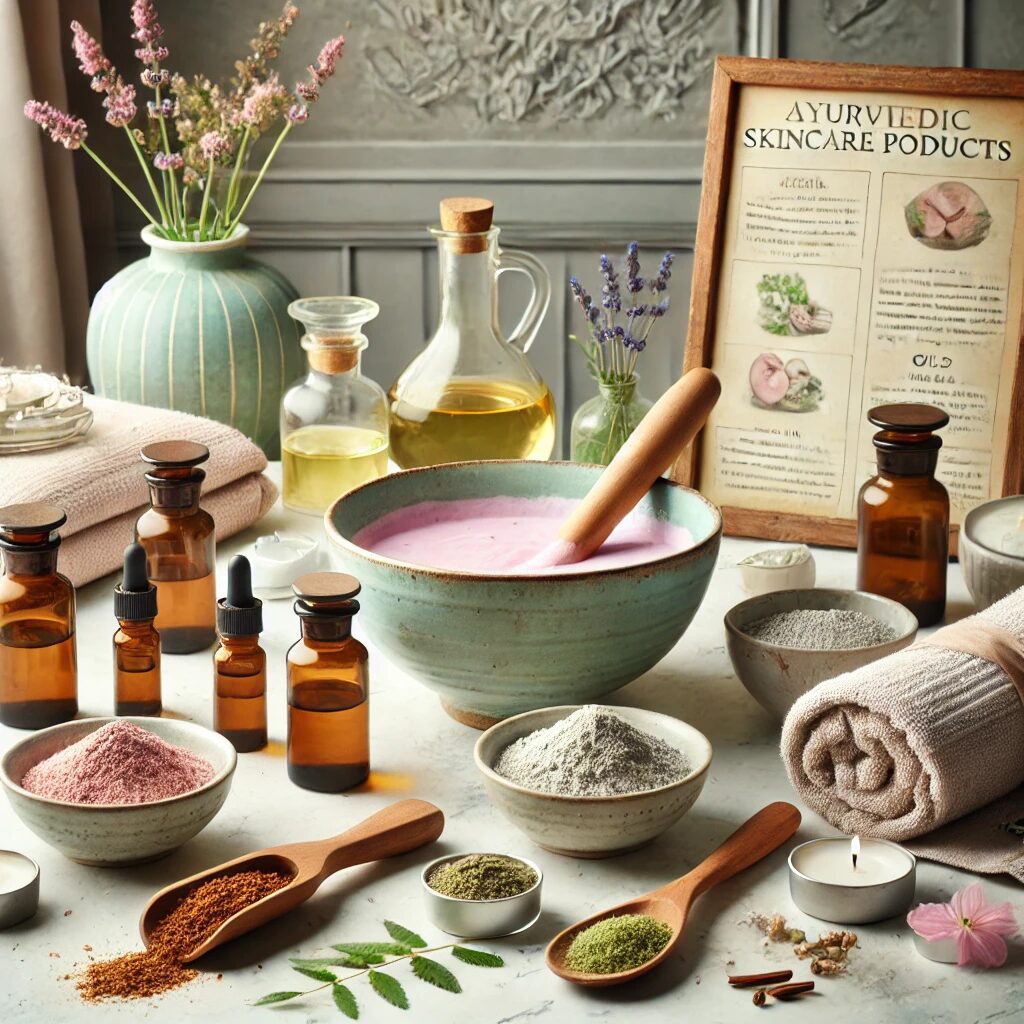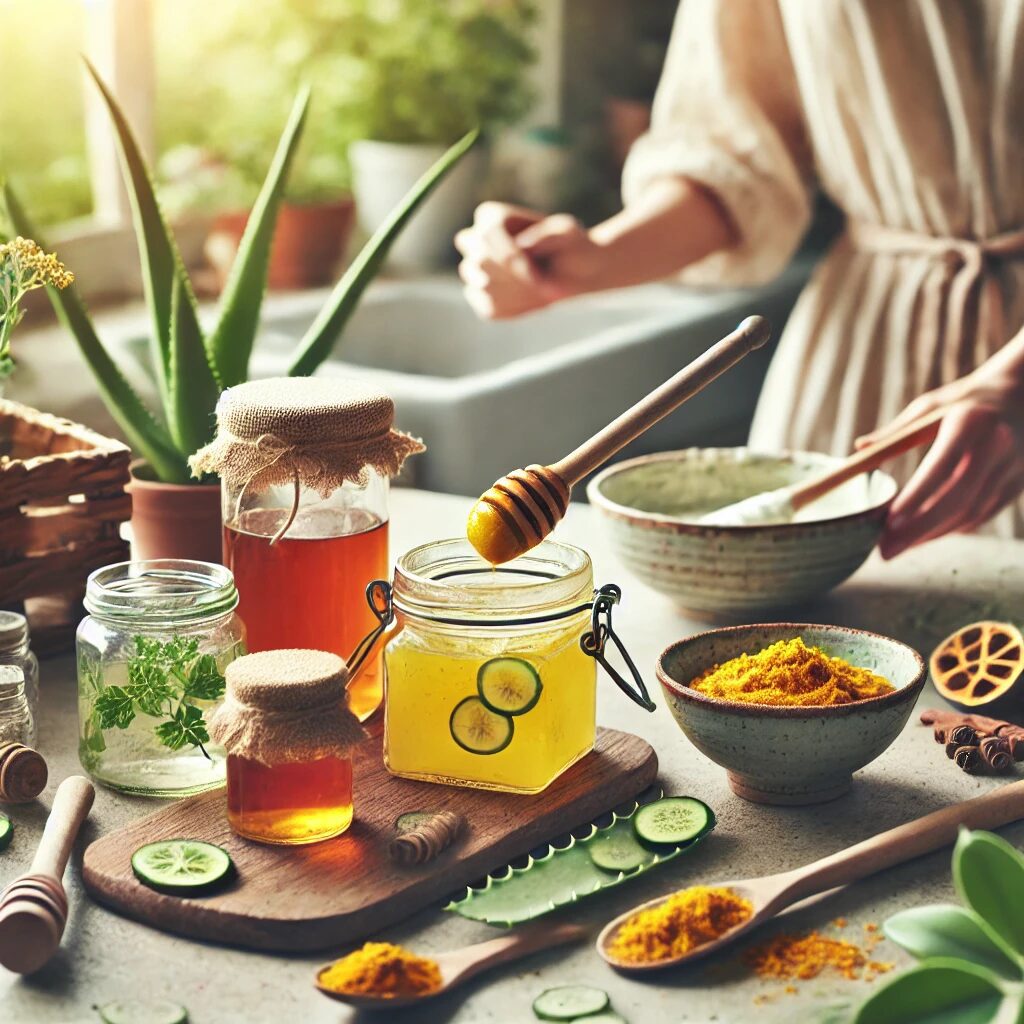Embrace Natural Skincare: Unlocking the Secrets of Ayurvedic Beauty
By Dennis Bluthardt at Namaste Studios
The trend of natural skincare has taken off. Most people are trying to avoid artificial chemicals and move towards products that do not have harmful additives. The trend is not just about finding “natural” products to put on our faces; it is also part of a larger, more “holistic” view of skincare that is not just seen as face value but as a piece of a complete view of health. This is Ayurveda skincare.
Ayurveda is an “alternative” form of medicine popular in India. The practice’s overarching theme is the balance of bodily systems, and it uses “natural” plant-based treatments instead of medical treatments. Its skincare routine adheres to the same principles: “Everything goes” with herbs and oils that are singular to you and your skin.
I will discuss the “what’s” and “whys” of Ayurvedic skincare, introduce you to the best products, and give you (or at least try to give you an idea of) your skin dosha, all to help you choose the products that best suit your needs and include them in your routine.

Understanding Ayurveda and Its Principles
Ayurveda is an ancient Indian system of medicine that is also incorporated into health and beauty. Well-being is supposed to be a state of balance between body, mind, and spirit. The dietary, lifestyle, and botanical solutions of Ayurveda typically provide the personalized care you need to fit your individuality based on your environment and where you’re from.
When you go to an Ayurvedic practitioner, they will typically describe your human constitution in terms of:
Vata
Pitta
Kapha
Dosha proportion. Doshas are “the soul factors” of Ayurveda. Vata is related to movement and creativity (some description is needed here to facilitate commerce). Pitta is related to transformation and metabolism (like the stomach). Kapha is related to stability and structure (like the skeleton).
If you’re a Vata type, you likely need very oily, moisturizing, and nourishing (rasayan) products. You’re probably dry. If you are Pitta predominant, you probably need cooling and bitter (diet) products. You’re probably a bit oily and “hot.” If you are Kapha predominant, you hopefully need us to get you to show up and stop eating so much cheap crap that transforms into a “lovely” mass in your bellies.

The Benefits of Natural Skincare
There are so many benefits to natural skincare products. By “natural,” the products are void of harsh chemicals often found in skincare items, making the formula necessary for the product to work much more gently on the skin. Many formulas of non-natural skin care products have harsh chemicals and ingredients, including parabens, sulfates, and fragrances, which (believe it or not) drastically reduce your skin’s pH. If the formula is natural and the ingredients are plant-derived, they often (but not always) work with your skin, providing your skin with the natural vitamins, antioxidants, essential healthy omegas, and/or moisture barrier-aid it craves or needs. Skin types seem to respond better to plant-derived formulations, as there is nothing “wrong” with the product (in other words, no “cheap” ingredients), causing a problem. Hence why, generally, “natural” or those on the more organic or “clean beauty” side of things products are a safer bet or “go-to” for those with all skin types (particularly sensitive skin) or those with severe ingredient allergies or sensitivities.

Key Ayurvedic Herbs for Skincare
Ayurvedic herbs have been used for centuries because they work wonderfully to encourage healthy skin function. Turmeric is a cooling spice that is also awesome for the skin. It is anti-inflammatory and has skin-brightening properties. Curcumin helps to decrease skin inflammation that can cause redness, like a blemish. This ayurvedic herb is perfect for those with skin prone to redness or blemishes. It is easy to use this herb topically. Just be sure to mix it with some yogurt or honey, please don’t apply it directly to the skin, as that could cause an intense burning sensation.
Neem, an Ayurvedic herb known for its antibacterial and purifying properties, is fantastic for maintaining clear skin. This herb is suitable for those with red skin, as it helps kill the harmful bacteria that could be linked to specific breakouts. It can also help give the skin an unmistakable, healthy glow. An easy way to use this herb topically is to apply neem oil. You could also try my current Ayurvedic skincare product of choice.
Aloe Vera is great for those with little time for a skincare regimen. Maybe you’re in school or a new you don’t have time to put energy into skin stuff. That’s okay. That’s easy with yourself, and remember, simplicity is key. Simply rinsing your face every day and every night, plus applying some aloe gel fresh from its leaf is a great way to cleanse and take care of yourself without needing to take on the extra energy of a skincare routine.
Mix these herbs in your masks and oils to optimize your herbal skincare routine. To offer a synergistic result, be patient and take a holistic approach to skincare. Gravitate toward these plants and trust that the process God has created for plant healing and skin repair will work within its time frame.

Creating Your Own Ayurvedic Skincare Routine
Constructing a personalized Ayurvedic skincare routine starts with understanding your dosha (body constitution). The dosha can be Vata, Pitta, or Kapha and will dictate unique features, leading to different skin types and needs. Vatas might have dry skin, while Pittas have a high potential for skin sensitivities and inflammation. The first part of the skincare routine is cleansing. Use cleansers made from natural ingredients such as chickpea flour or aloe vera.
Natural cleansers are effective and do the dipping without disrupting too much of the skin’s lipids, which can sometimes make the skin dry and flaky.
Next, everyone needs a bit of a scrub. Exfoliants and scrubbing are essential for rejuvenating skin because they remove the old layer of dead, intact skin cells. When the skin is exfoliated, a newer, healthier layer of skin appears, which makes the skin look healthier. With many Ayurvedic herbal ingredients such as turmeric, neem, rose petals, etc., the skin can exfoliate while benefiting from the herbs. Some Ayurvedic herbs have anti-inflammatory properties. Some scrub products are meant to be used once or twice a week for scrubbing—these are the “masks” that can be “sed weekly and are for “extra care” and “rather than “for Vata, Pitta, and Kapha doshas. (Vatas will use gentler or lighter scrubs, and Pittas will use anything that goes well with sensitive skin.)
Lastly, creams and oils lock in hydration or moisture. These can also be used for massage because the best oils and lotions suit your dosha. This means that if you’re a Vata, you’re using creamy and heavy oils, while Kaphas like something light like “jojoba oil.”

DIY Ayurveda Skincare Recipes
Homemade skincare is a form of beauty in which you use Ayurvedic ingredients (or whatever you have at home) to create a more natural and holistic beauty regimen.
These would include recipes for skin masks or face scrubs, perhaps even some home blend oils that could be made from items you can quickly get from the grocery store, turmeric, honey, sugar, and coconut oil- already in your pantry. These DIY recipes will also be ideal for the skin: a turmeric face mask may brighten the skin and reduce inflammation. At the same time, a sugar and coconut oil scrub may help lower the body’s inflammatory response and boost lymphatic health. Goodbye to those super rough body-brushing bristles!
The great thing about these DIY Ayurvedic (or pantry) skincare recipes is that they can become one of the most personalized and custom home experiences you can have in the comfort and safety of your own home.
To reevaluate and respond to what I said earlier about “making your products” by creating “your skincare, you control the ingredients. And because you control what’s going into your products, you will know that, oftentimes:
You will immediately see a difference if you inject Ayurvedic principles into your homemade beauty remedies. And why not? The junction of Ayurveda and beauty emphasizes making the mind, body, and spirit healthy. Ayurvedic principles cater to these skin types, therefore playing out in the long run when approached from a generic stance. The generic stance in this case is acne, aging, and dryness.
Do yourself a favor; leap beyond Ayurvedic standards and experiment. Turn up the Ravi Daydream a little louder and dance to the to-ing and fro-ing of natural ingredients. Some widely known jewels are turmeric, neem, and aloe vera. You can find all these by walking into a Trader Joe’s. Take two teaspoons of turmeric and use it to reduce facial inflammation. Use your homemade face oil by infusing neem as a first step on your body.
Community. By engaging in this topic, you will find the missing puzzle piece to unlock the other weird or sick people. Another person may also read this page. We should get a counter for this kind of phenomenon!
To learn more, visit Ayurveda at Namaste Studios to book an Ayurveda session. Additionally, you can find more of our Ayurveda Blogs here.
For a Limited Time: Get your NEW MOON JOURNAL for a massive discount at Amazon here!
Bonus for blog readers: Learn how AI Chatbots Work. Click here for a FREE WEBINAR – It’s pretty amazing!




